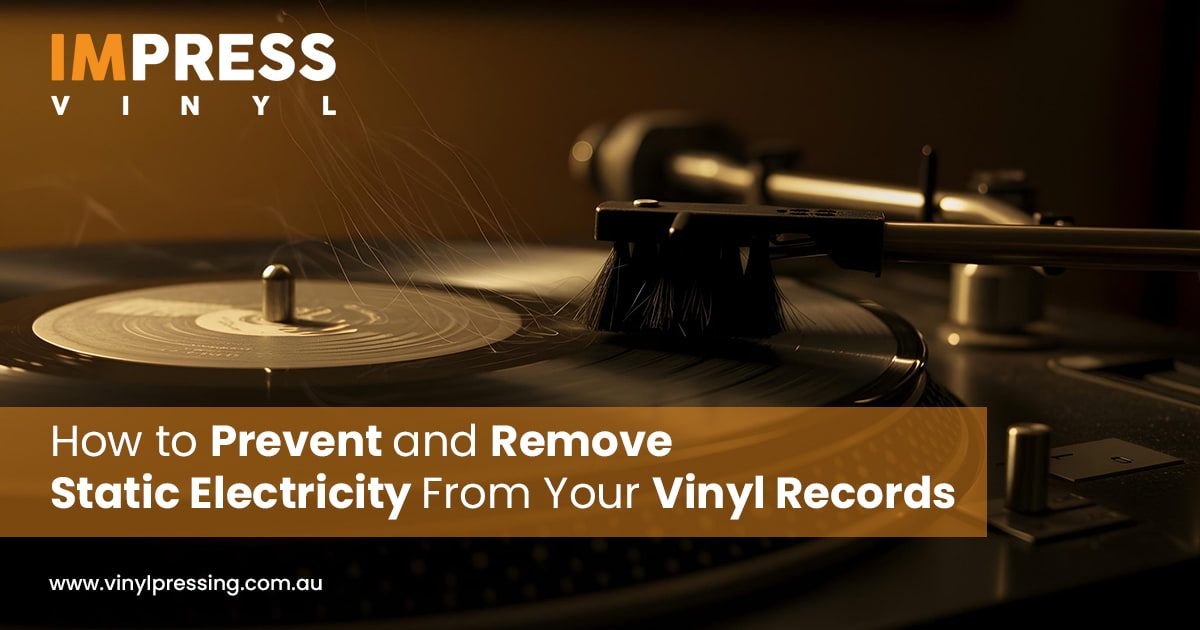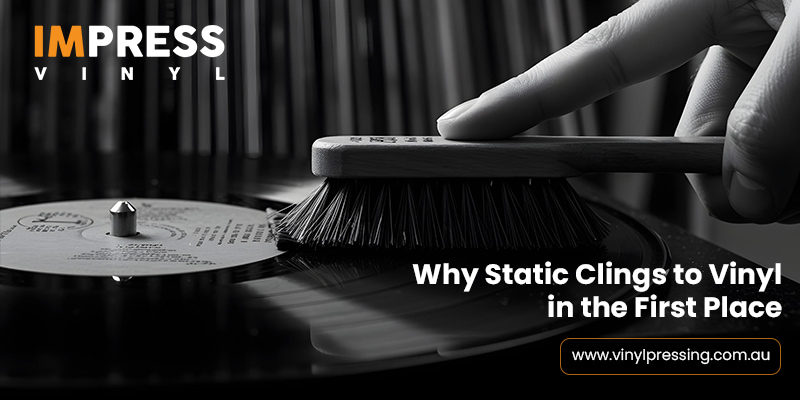How to Prevent and Remove Static Electricity From Your Vinyl Records

Imagine that the lighting is perfect, the stylus is immaculate, and the turntable is prepared for that nighttime vinyl session. As the needle falls, a few crackles, pops, and a hiss start to appear in place of the clear, continuous sound.
As if attracted, it then obstinately adheres to the hand or the slipmat when it’s time to turn the record. The culprit? Static electricity on records.
This invisible annoyance does not just disrupt the listening experience; it also attracts dust like a magnet, pulling airborne particles directly onto the record’s delicate grooves. And those particles are not just a cosmetic issue — they are an open invitation for more noise and long-term groove wear.
Why Static Clings to Vinyl in the First Place
Polyvinyl chloride (PVC), the material used to create vinyl records, has an inherent tendency to gather and hold electrical charge. Friction creates an electron imbalance as the record is spun on the platter or moved in and out of its sleeve.
Once charged, the record draws in microscopic debris that becomes stuck in grooves, acting as a dust collector. Once charged, the record behaves like a dust collector thus attracting tiny debris that gets trapped in grooves.
This explains why a record can look clean under the light yet still produce background noise.
Static is silent until playback, when the stylus interacts with these charged, dust-covered grooves. The challenge is not just to remove static from vinyl the static temporarily but preventing it from returning.
Essential Tools and Techniques for a Static-Free Collection

-
Anti-Static Brushes
An anti-static record brush might look simple, but its design is anything but. Usually made with thousands of fine carbon fibers, it’s engineered to reach deep into the grooves and neutralize the charge.
The fibers conduct the static away while lifting surface dust.
What makes this tool a must-have is its dual role — removing visible debris and dealing with the invisible charge. The brushing process is quick, often just a few gentle swipes before each play, yet it noticeably reduces crackles.
Also, there’s something oddly satisfying about the pre-play ritual of brushing a record before the stylus touches down.
-
Anti-Static Inner Sleeves
Static often forms when sliding a record in and out of its sleeve. Traditional paper sleeves, though common, can create friction and worsen the problem.
Anti-static inner sleeves, usually made from high-density polyethylene (HDPE) or rice paper, are designed to prevent static on record and minimize dust attraction.
The standout feature here is the smooth non-abrasive surface. It cradles the record without scratching or clinging and the anti-static properties mean less dust is attracted during storage. Over time this dramatically cuts down on cleaning frequency.
An extra advantage is that high-quality anti-static sleeves also reduce wear on the outer jacket by making record removal smoother. This is a storage solution that doesn’t just fight static but preserves the overall condition of the vinyl collection.
-
Record Cleaning Machines
For collections that demand top-tier care, a vinyl record cleaning machine offers an unmatched level of record static removal and groove cleaning. These machines use a combination of cleaning fluid, brushes and suction or ultrasonic vibrations to eliminate both debris and charge.
By removing microscopic particles embedded in the grooves, they also prevent static on records from redeveloping quickly. Some ultrasonic models use high-frequency sound waves to agitate the fluid, dislodging dust and neutralizing static without any direct physical contact.
It’s not just about the immediate difference in sound. Regular deep cleaning with such a device extends vinyl record life significantly and keeps the stylus in better shape, reducing wear on both.
-
Anti-Static Guns
At first glance, an anti-static gun might look like an unusual gadget but it’s a favorite among serious vinyl listeners. By releasing a stream of ions it neutralizes the static charge on the record’s surface, helping to remove static from vinyl quickly and effectively.
A few trigger pulls aimed at the record before and after playback can noticeably cut down on dust attraction and surface noise.
-
Room Humidity Control
Static thrives in dry environments. When indoor humidity drops — especially in winter or in air-conditioned rooms — static charges build faster and cling longer. Maintaining 40% and 50% makes record static removal less necessary because static is likely to form in the first place.
Using a humidifier in the listening space is a simple yet powerful fix. It creates an environment where static struggles to form. The additional benefit? It’s also better for wooden furniture, plants and even human comfort.
-
Avoiding Excess Friction
The way a record is handled can either prevent static on record or encourage static buildup. Sliding it quickly in and out of sleeves, stacking records, or letting them rub against other surfaces all increase the chance of charge formation.
A mindful approach — holding records by the edges, using slow, gentle movements, and ensuring the slipmat is static-resistant can reduce the need for frequent record static removal.
-
Anti-Static Slipmats
Slipmats might seem like a purely aesthetic choice, but the material they’re made from can either help or worsen static problems. Felt mats, while common, can encourage charge buildup. In contrast, cork, rubber or specialized anti-static mats resist charge accumulation.
The feature that makes them valuable is their constant contact with the record during playback. By choosing the right slipmat, it can prevent static on records throughout the listening session without needing to pause or clean mid-play.
An added perk is vibration damping. Many high-quality anti-static mats also absorb vibrations from the turntable motor, improving sound clarity.
Conclusion
Static electricity on records may be invisible, but its impact is instantly recognizable to anyone who’s heard those unwanted pops and crackles. By combining preventive measures — like anti-static record brush and slipmats with corrective tools like brushes, cleaning machines and ionizing guns — the problem can be managed effectively.
But if you truly want to experience vinyl in its purest form, Impress Vinyl is your go-to destination.
From premium anti-static accessories to expert-grade cleaning solutions, every product is designed with one goal — to keep your records sounding as warm, rich, and timeless as the day you bought them. With Impress Vinyl, your collection isn’t just protected — it’s elevated.